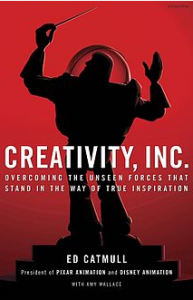In the previous blog the issues around building trust, and the initial steps towards an inclusive creative community were addressed. This week the Andrew Lloyd Webber Foundation published their report on BAME talent and the barriers to entry in UK theatre – Centre Stage :The Pipeline for BAME Talent. In the light of this I am looking at the issues of recruitment, progression and visions of inclusion across the creative industries.. All of these points are part of the bigger picture addressed in earlier discussions around the issues and solutions facing the creative industries in the UK.
Nepotism is the enemy of inclusion and quality
One of the major problems facing any creative team, be they part of a large media company or a small start up, is the lack of skills and/or experience to be found in the current workforce. This combined with a lack of advertising spend in the early stages of start ups has led to musical chairs at the senior level of company development, a reliance of on who you know when it comes to temporary staff or talent recruitment, and networking within small self-defining communities when looking to develop new teams.
Some of this is understandable when you consider the myths and misunderstanding about the nature of creativity – see previous blog on making content development work. However, beyond these basic issues the narrow basis from which most recruiting is done needs to be widened if inclusion is to be our goal, and talent is genuinely going to be the real decider.
Starting from the Inside
You cannot be inclusive toward excluded individuals if you are not already inclusive inside your organisation.
“When it comes to creative inspiration, job titles and hierarchy are meaningless.” Ed Catmull : Creativity, Inc.: Overcoming the Unseen Forces That Stand in the Way of True Inspiration
Developing an open structure where everyone in the team – including the cleaner, is able to contribute to new ideas, developing a product and helping rescue projects is vital to an inclusive approach, working. It means that when a traditionally excluded group member enters the team they are equal terms with people from the off. This can be seen in one of the most successful and largest international design companies Arup to the small team operations of Supercell one of the world’s leading games companies.
First Encounters
Most people can remember those who were good at exams in school, and those who were not, those who are quiet in groups, and those that dominate, those who are good with words and those who seek to find the right ones. Given these difference it becomes critical to be open to different levels of skill, experience, and confidence – doubly so when dealing with individuals who have experienced discrimination, or know they are from a traditionally excluded group.
In the last blog I emphasised the need for open introduction sessions, and short introductory courses. However, the interview or the recruitment process needs to follow a similar inclusive agenda. Always ensure more than one person is present at all interviews, and that they reflect a diversity in their presence. One male and one female is a good start, but asking a representative of an excluded group to be part of the process will again build trust into the process.
Equally do not assume the lead interviewer will be the most senior person present, as often as not this will be a white middle class man. Let the person from the excluded community take the lead. You will gain the same information from the interviewee but the fact that someone other than the white middle class man is leading, matters. It helps build trust.
Striving for Quality
Often when people discuss issues of inclusion you hear the fear of ‘positive discrimination’ or worse ‘political correctness’ leading to an undermining of quality – token gestures leading to bad appointments. The real problem is that current practice has led to bad appointments, and the exclusion of talent, thus undermining the quality of the creative industries. Evidence of this runs from UK acting talent flourishing in the US to the decline of the UK dominance in games development on the global stage, and the ongoing failure of UK films to make profits.
Quality is continually undermined if you do not include the best people available, and have an open and diverse approach to the global audiences which now dominate our digital worlds.
Visions of Inclusion
Trust is hard to build in a team, especially in a culture riven with fear of the other, and the insecurities of freelance and temporary contracts. If we want quality, we have to be inclusive. To do this we need to overcome these fears. The easiest way to achieve this is to respect each other, and include everyone in the goal of creating better.
Quality sometimes is achieved by accident, but as Pixar and various other companies and teams have proved it is largely by design. So as Ed Catmull puts it :-
“Always take a chance on better, even if it seems threatening.”


